Quick Airline Information:
✈Airline IATA* code: FI
✈Airline ICAO* code: ICE ✈Founded: 1937 ✈Website: www.icelandair.com✈Alliance: None✈History
✈Operations and Destinations 🌍
✈Fleet ✈️
✈Photo Slide 📷✈Safety Video 🎬✈Airline reviews ⭐
*IATA: (International Air Transport Association)
*ICAO: (International Civil Aviation Organization)
History Menu:
Icelandair traces its roots back to 1937, when Flugfélag Akureyrar was founded in Akureyri on the north coast of Iceland. Flight operations started in 1938 with a single floatplane Waco YKS-7. In 1939 the airline was grounded when this aircraft was destroyed in a capsizing accident. The company moved to Reykjavík, where it acquired another Waco aircraft and was re-launched in 1940 as Flugfélag Íslands, then for international purposes, the name Iceland Airways was adopted.
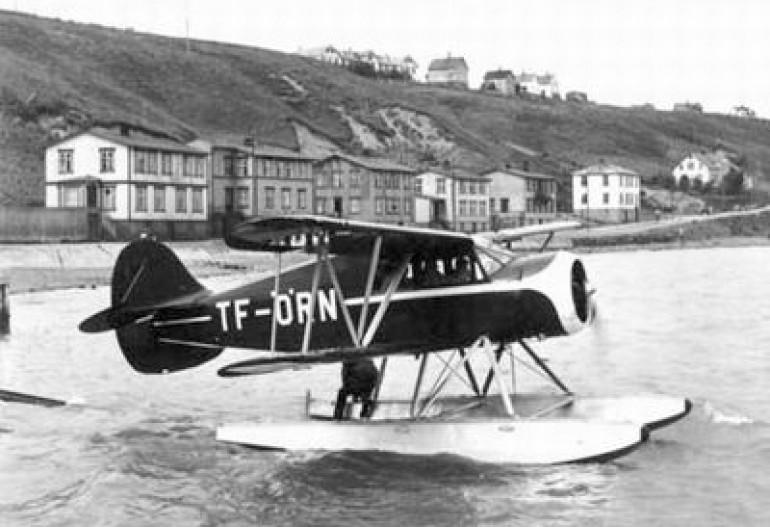
The fleet was expanded with a Beechcraft Model 18 in 1942; and with two de Havilland Dragon Rapides and a Consolidated PBY Catalinain 1944. On 11 July 1945, this aircraft operated the first commercial flight over the Atlantic Ocean for the airline, from Reykjavík to Largs in Scotland. Regular flights to Prestwick in Scotland and Copenhagen in Denmark started using Consolidated B-24 Liberator aircraft leased from Scottish Airlines in 1946. In the same year, comfort and performance of domestic flights in Iceland improved with the introduction of the Douglas DC-3, the oldest one being still flight-worthy as of 2011.
.jpg)
International services stayed part of the business model of Flugfélag, though to a far lesser extent compared to Loftleiðir. In 1948, the Douglas C-54 Skymaster was introduced on those routes, and in 1957 two new Vickers 759 Viscounts were acquired, the first turboprop airliners to be operated by an Icelandic airline. In the 1950s, Flugfélag began to use the 'Icelandair' branding for its international flights.
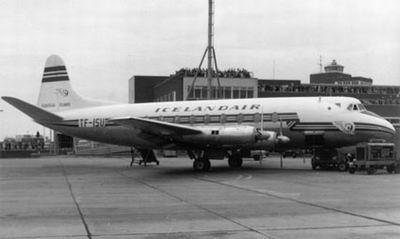
In 1967, Flugfélag introduced the first jet airliner in Iceland, a Boeing 727-100, with it a new livery was used as well. Another 727 was acquired in 1971, and the aircraft type was operated until the 1990's
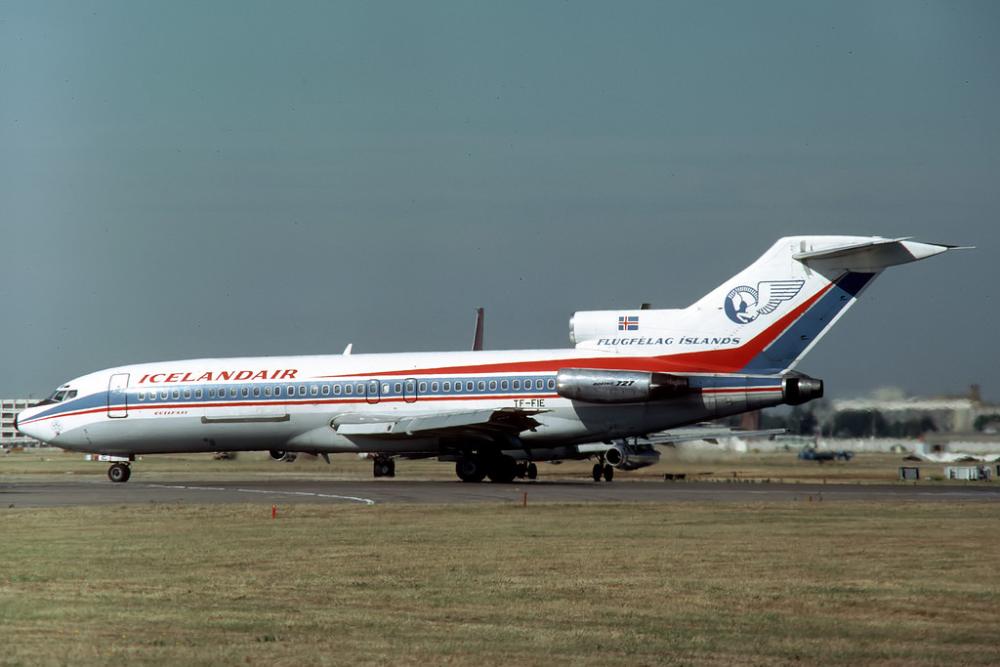
Another company called Loftleiðir had been formed in 1944 concentrated on Icelandic domestic air services for the first few years but then opened scheduled international operations in 1947. By 1952, the Icelandic authorities were very worried that fierce competition between both Icelandic airlines would ruin both companies, and attempted to force a merger between them. This did not happen at the time, but instead the authorities split up the domestic routes between the two airlines. As a result, Loftleiðir ceased domestic flights in Iceland entirely, concentrating instead on international flights. During those years, Loftleiðir was often referred to, even by the company's own staff, as "the Hippie Airline" or even "the Hippie Express". Loftleiðir was not famous for speed or punctuality, but flying with the company became a sort of rite of passage for young "hippies" from America travelling to Europe.
During the 1970s energy crisis, the economic situation for both Flugfélag and Loftleiðir worsened. The government of Iceland initiated a new attempt to merge the two airlines, which happened in 1973. A holding company called Flugleiðir was created, which combined the two companies and began to streamline staff and operations. At the time of the merger, two thirds of the passenger traffic of the airline were international transatlantic crossings, and Flugfélag's fleet of Douglas DC-3s and Boeing 727s was enlarged by the Douglas DC-8s of Loftleiðir. In 1979, Flugfélag bought all of Loftleiðir's assets, and the airline was renamed Icelandair.
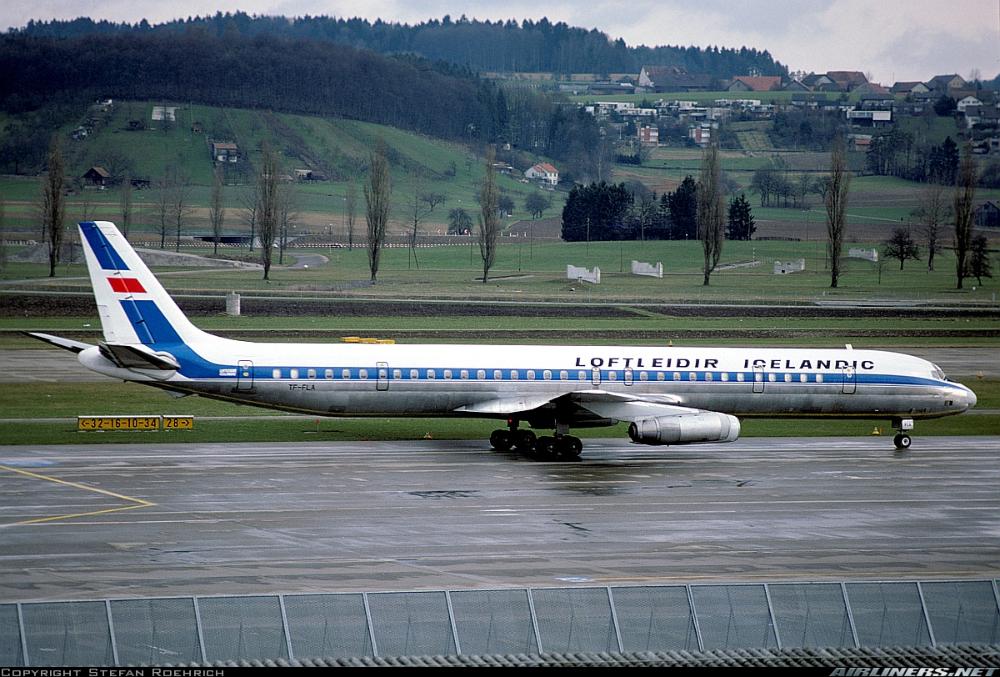
The aircraft fleet of Icelandair remained mainly unchanged until the Boeing 757-200 became the new backbone for transatlantic flights during the 1990s. The domestic Fokker F27s were replaced by Fokker 50s and Boeing 737s deployed on European routes. In 1997 the domestic operations of Icelandair, part of which had previously been operated under the 'Flugfélag Nordurlands' branding, were combined with small airline Nordurflug to form the Air Iceland Connect subsidiary, allowing mainline Icelandair to fully concentrate on international flights since then. On 20 November 1999, a new aircraft livery was introduced, as part of an image campaign designed to retire Icelandair's "backpacker" label in favor of an emphasis on business travel.
.jpg)
The Flugleiðir holding was reorganized as Icelandair Group (for aviation business) and FL Group between 2002 and 2005, with Icelandair becoming the largest and most important of eleven subsidiaries. Like most Icelandic companies, Icelandair was hit quite hard by the 2008 financial crisis in the country, but was well on the road to recovery when another crisis of a very different kind hit in 2010. The air traffic restrictions following the 2010 eruptions of Eyjafjallajökull resulted in large parts of the European airspace being closed down. In the aftermath of the eruption, the government of Iceland launched the successful "Inspired by Iceland" campaign to regain confidence in travelling to Iceland for tourists and business people.
.jpg)
After having launched scheduled flights to Washington D.C. in 2011, Denver was announced as a new U.S. destination for 2012, followed by Anchorage in 2013, bringing the total number of cities served in the country up to eight, along with Boston, Minneapolis, New York City, Orlando and Seattle. Also in 2012, Icelandair resumed domestic services, with regular flights linking Akureyri to its Keflavík hub through subsidiary company Air Iceland. New destinations in 2014 were Edmonton and Vancouver in Canada and Geneva.
On 9 December 2014, Icelandair revealed a northern lights themed Boeing 757-200 named Hekla Aurora. The aircraft was officially launched in February 2015 as part of the company’s #MyStopover campaign. As part of Icelandair’s transatlantic fleet, the Hekla Aurora flies to all of the airline’s 40 destinations and has a three-day schedule available for passengers and observers via it’s website.
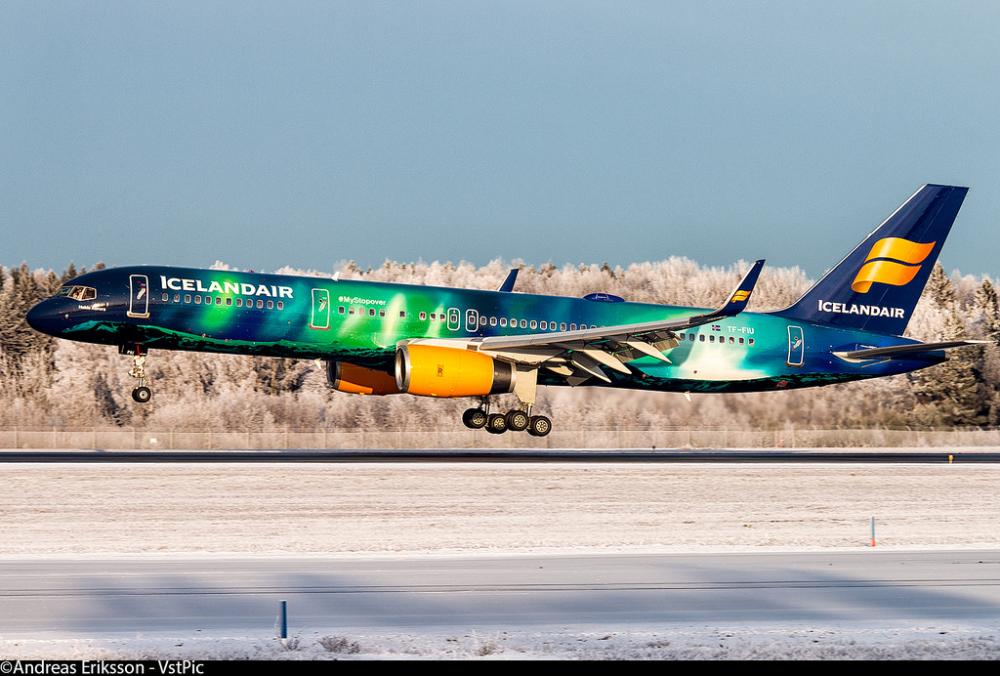
On 5 February 2015, Birmingham became Icelandair’s 5th gateway in the UK. In May 2015 Icelandair launched scheduled flights to and from Portland, Oregon in the US. Further expansion of Icelandair’s global network was announced on 12 May 2015 with new, year-round services from Chicago. On 17 August 2015 Icelandair announced the augmentation of its global flight network with a new service between Keflavik and Aberdeen, the company’s second Scottish destination. The new service, operated by Air Iceland Connect (a subsidiary of Icelandair Group). It also commenced scheduled flights to Paris Orly Airport beginning on 29 March 2016 and to Montreal in 2016.
In Sep 2017 Icelandair started services to Philadelphia and Tampa, US starting in Sep 2017. In May 2017, Icelandair unveiled a glacier-themed special livery on Boeing 757-200 named Vatnajökull, the name of Europe's largest glacier. The special livery was created in order to commemorate Icelandair's 80th anniversary. It also introduced the Boeing B767 into the fleet to cope with the expansion of the airline as it awaited for new deliveries placed with Boeing for B737 Max.
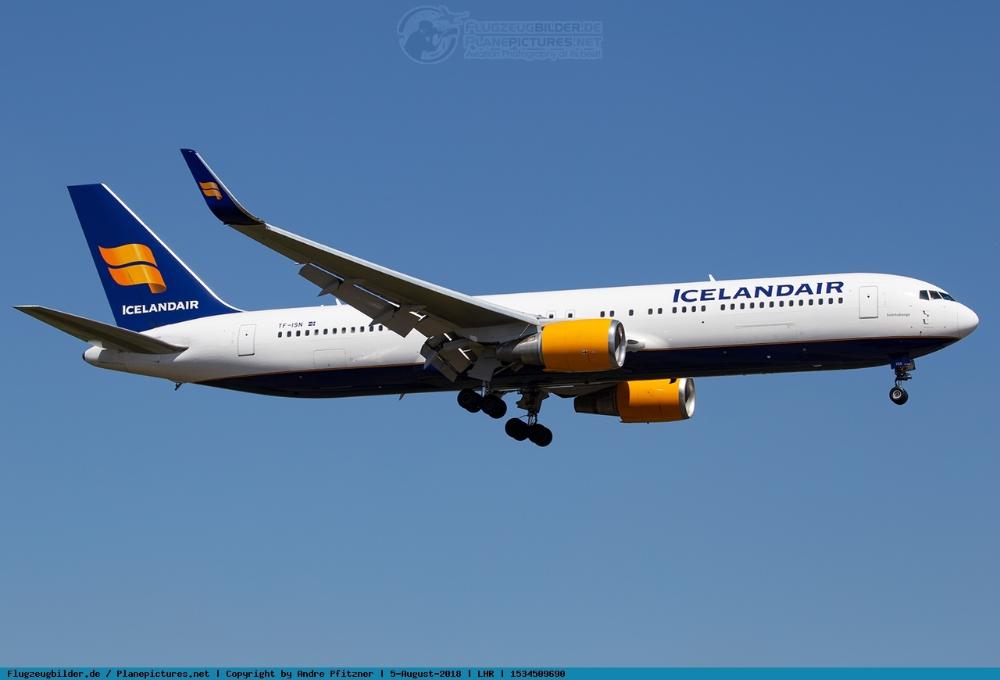
2018 saw the airline receive a new aircraft type , in April 2018 it took delivery of the first new generation Boeing 737-800 Max to open up new routes and replace older types such as the B757 and B767. Also in 2018, Icelandair started flying to Kansas and Cleveland, US and commenced weekly flights to and from Dallas Ft. Worth.
History source: Wikipedia.org + Icelandair
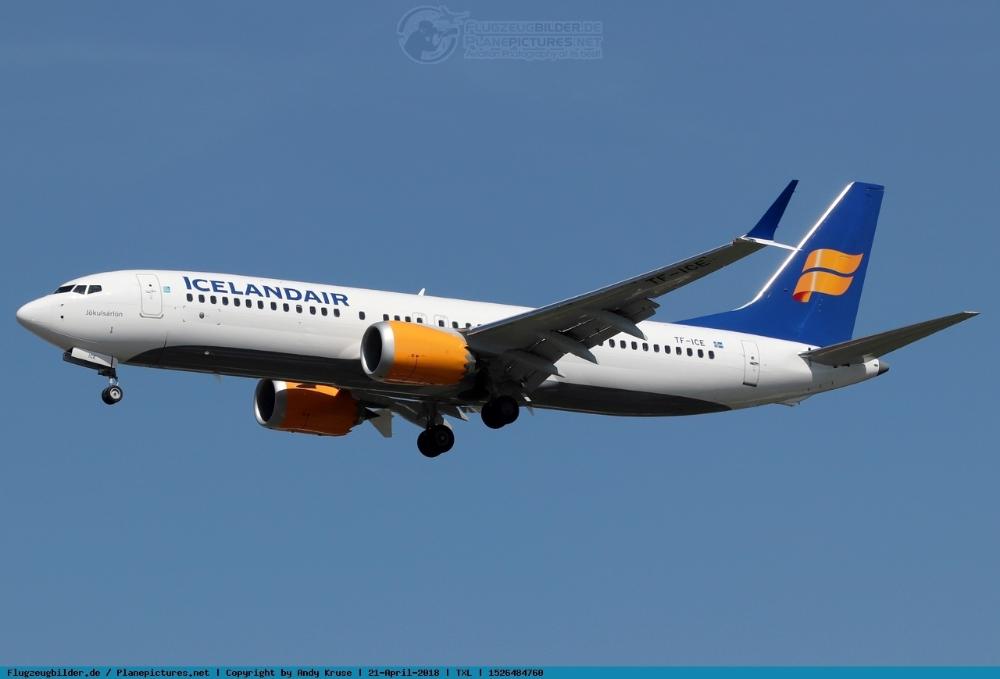
Operations and Destinations 🌍:
The airline bases all it's operations in its only hub at Keflavik International Airport, in the south of Iceland. It acts as an important stop over city to many connecting passengers who choose to take the airline via Reykjavik as to transit either to Europe or North America. Icelandair connects 24 gateways in Europe with 23 gateways in North America.
Icelandair operates domestic services, with regular flights linking Akureyri to its Keflavík hub through subsidiary company Air Iceland.
Icelandair flies to the following destinations*:
| Region 🗺️ | Destinations 🌍🌎🌏 |
|---|---|
| ✈Iceland (domestic*) | Akureyri, Egilsstaðir, Ísafjörður, Reykjavík (KEF,RKV) *Flights operated by Air Iceland Connect. |
| ✈Greenland* | Ilulissat, Ittoqqortoormiit, Kulusuk, Narsarsuaq, Nuuk, Kangerlussuaq. *Flights operated by Air Iceland Connect |
| ✈USA and Canada | Anchorage, Baltimore, Boston, Chicago, Cleveland, Dallas, Denver, Kansas City, Minneapolis, New York City, Newark, Orlando, Philadelphia, Portland, Oregon, San Francisco, Seattle, Tampa, Washington D.C, Halifax, Edmonton, Toronto, Montréal, Vancouver. |
| ✈Europe | Alicante, Amsterdam, Barcelona, Bergen, Berlin, Billund, Brussels, Copenhagen, Dublin, Düsseldorf, Frankfurt, Geneva, Glasgow, Gothenburg, Hamburg, Helsinki, Las Palmas, London (LHR, LGW), Madrid, Manchester, Milan, Munich, Oslo, Paris, Stockholm, Tenerife, Verona, Zürich |
*Destination list is for reference only. Please check directly with the airline for updates.
*Note some destinations are only seasonal.*Correct info as of Nov 2018.
Fleet ✈️:
The fleet of Icelandair is currently under a transitioning period with new Boeing aircraft arriving in the coming years, bringing many enhancements to the passenger experience and to the company itself as more fuel efficient planes arrive. Most of the aircraft in Icelandair's fleet are named after Icelandic volcanoes as a curiosity. The airline uses most aircraft on all routes depending on demand and season, since most of it's aircraft can cover every route offered.
The fleet* consists of the following aircraft:
| Network 🌐 | Aircraft ✈️ |
|---|---|
| ✈Medium and Long haul | Boeing 757-200/300, B767, (B737 Max8/9 on hold), B787-8 (to be delivered) |
*Correct fleet info as of Nov 2018.
Icelandair Photo Slide 📷:
Icelandair Safety Video (B757) 🎬:
Reviews ⭐:
 |  |
|---|---|
| ✅Best airline to fly to Iceland. | 👎Not part of a global alliance ( has own programme for points/miles). |
| ✅Good fares for connecting flights between Europe and North America. | 👎 Economy class no meal provided (for sale only). |
| ✅ Modern fleet with on demand entertainment for all classes. | 👎 No hold baggage allowance on lowest fares. |
| ✅ Wi-Fi available (6 euros charge for economy passengers). | |
| ✅ Comfortable seating, free non-alcoholic drinks served (economy). | |
| ✅Professional and efficient crew. |














.png)